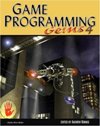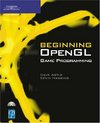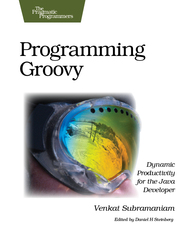作者:Andrew Kirmse
出版日期:March 3, 2004
出版社:其它
页数:744
ISBN:ISBN-10: 1584502959 ISBN-13: 978-1584502951
文件格式:PDF
Product Description
Uncover the secrets of the game industry’s best programmers with thenewest volume of the Game Programming Gems series.With over 60 all newtechniques, Game Programming Gems 4 continues to be the definitiveresource for developers. Written by expert game developers who maketoday’s amazing games, these articles not only provide quick solutionsto cutting-edge problems, but they provide insights that you’ll returnto again and again. They’ll spark your creativity and inspire your owndiscoveries.For the past few years, the game industry has been on an incrediblejourney of exploration and innovation. In conjunction with thisjourney, the scope of the Game Programming Gems series has broadened aswell. With the variety of new platforms available, coverage has beenexpanded to include alternative languages and third party APIs. Mostcode is written in C++, but some interpreted languages (Java andPython) are also represented. The graphics articles make use of OpenGL,DirectX, and the various available shader languages. Volume 4 alsoincludes an all new physics section that teaches innovative techniquesfor implementing real-time physics that will help you create emergentgameplay. To make searching between all four volumes of the series easyand efficient, we have added a cumulative index.
This new volume is a definite must-have resource for every game programmer’s library!
Section Editors:
Chris Corry, General Programming
Jonathan Blow, Mathematics
Graham Rhodes, Physics
Paul Tozour, Artificial Intelligence
Alex Vlachos, Graphics
Pete Isensee, Network & Multiplayer
Eddie Edwards, Audio
Section Highlights:
General Programming: the science of debugging games, largecross-platform libraries, generic tree container in C++, weakreferences and null objects, system for managing game entities
Mathematics: using the Mersenne Twister, extracting frustum andcamera information, solving accuracy problems in large worldcoordinates, using the covariance matrix for better fitting boundingobjects
Physics (New): algorithms for combat killing, vehicle physicssimulation for CPU-limited systems, constraints in rigid body dynamics,interactive water surfaces
Artificial Intelligence: third-person camera navigation, using AI toenhance dramatic tension, NPC decision making, distributed-reasoningvoting architecture
Graphics: GPU shadow volume construction for non-closed meshes,perspective shadow maps, shadow buffers, motion capture datacompression, terrain occlusion culling with horizons
Network & Multiplayer: efficient MMP game state storage,application of parallel-state machines in a client-server environment,bit packing, time and consistency management for multi-server basedMMORPGs
Audio: introduction to OpenAL, real-time lip synching, dynamicvariables and audio programming, controlling real-time sound synthesisfrom game physics
CONTRIBUTORS
Marwan Y. Ansari
Jonathan Blow
James Boer
Paul Bragiel
Warrick Buchanan
Bill Budge
Waldemar Celes
Chris Corry
Carsten Dachsbacher
Mark DeLoura
Shekhar Dhupelia
Thomas Di Giacomo
Michael Dougherty
George Drettakis
Eddie Edwards
David Etherton
Glenn Fiedler
Peter Freese
Bert Freudenberg
Paul Glinker
Mario Grimani
John Hancock
Søren Hannibal
Matthew Harmon
Oliver Heim
Jim Hejl
Pete Isensee
Toby Jones
Andrew Kirmse
Adam Lake
Jay Lee
Noel Llopis
Thomas Lowe
Frank Luchs
Nadia Magnenat-Thalmann
Carl S. Marshall
Adam Martin
Maic Masuch
Dave McCoy
Ádám Moravánszky
Frederic My
Chris Oat
James F. O’Brien
John M. Olsen
Marcin Pancewicz
Kurt Pelzer
Borut Pfeifer
Karén Pivazyan
Nick Porcino
Mark T. Price
Matt Pritchard
Justin Quimby
Steve Rabin
Graham Rhodes
Thomas Rolfes
Greg Seegert
Larry Shi
Jake Simpson
Roger Smith
Russ Smith
Marco Spoerl
Marc Stamminger
Jonathan Stone
Don Stoner
Thomas Strothotte
Natalya Tatarchuk
Pierre Terdiman
Jerry Tessendorf
Paul Tozour
Joe Valenzuela
Jim Van Verth
Scott Velasquez
Alex Vlachos
Tao Zhang
About the Author
Andrew Kirmse was the co-inventor and director of Meridian 59 (1996),and the graphics programmer on StarWars: Starfighter (2001). He hasdegrees in physics, mathematics, and computer science from theMassachusetts Institute of Technology, and currently works forLucasArts Entertainment Company. He has contributed to all threevolumes of the Game Programming Gems series, and served as the sectioneditor for Network and Multiplayer Programming in volume 3. MarkDeloura, the founding editor of the series, is the manager of developerrelations for Sony Computer Entertainment America, with a focus onPlayStation and future entertainment products.






 评论 (1)
评论 (1) 